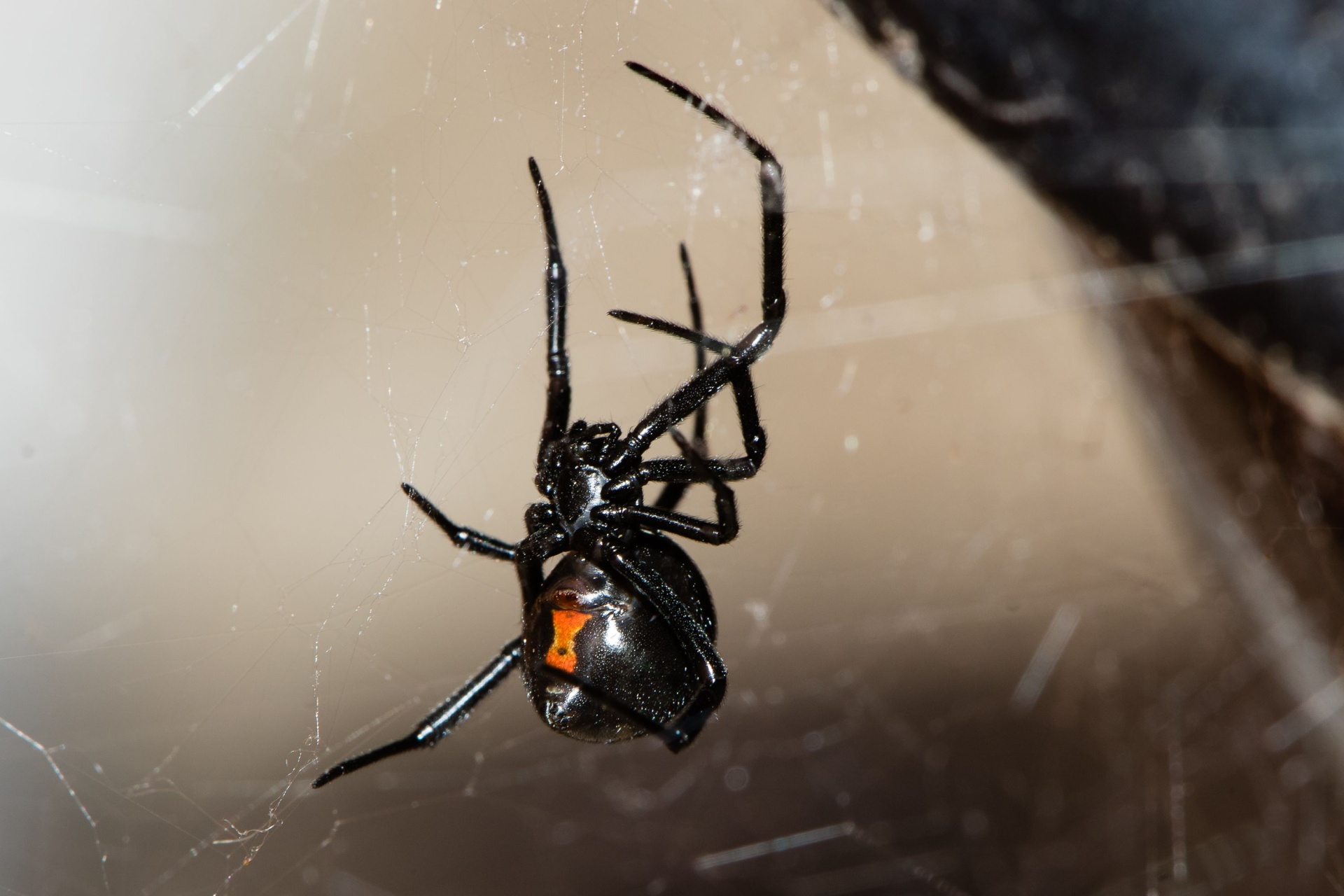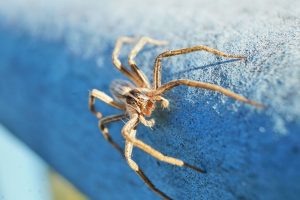Fort Myers FL is home to a wide variety of spider species, many of which quietly coexist with residents in and around their homes. While most are harmless and even helpful in controlling other pests, some can pose serious risks. Understanding the types of house spiders in Fort Myers and how to identify them is key to keeping your living space safe and comfortable.
Professional spider control services in Fort Myers can help you identify and manage infestations before they become a bigger issue.
To help you identify the most common arachnids in Southwest Florida, here’s a closer look at the types of house spiders in Fort Myers and what makes each one unique.
American House Spider
Often the most frequent visitor in Fort Myers homes, the American House Spider is small, brownish-gray, and known for its messy cobwebs in ceiling corners and behind furniture. These spiders are non-aggressive and rarely bite, preferring to stay hidden and feed on smaller insects.
They belong to the comb-footed spider family and are known for their irregular, tangled webs. These spiders thrive in quiet, undisturbed areas and are often a sign of other insect activity nearby. While they’re not dangerous, their webs can accumulate quickly, making regular cleaning essential.
Cellar Spider (Daddy Long Legs)
With their long, delicate legs and tiny bodies, cellar spiders are often mistaken for other species. They’re commonly found in damp areas like bathrooms, laundry rooms, and crawl spaces. Despite urban legends, their venom is not dangerous to humans.
Cellar spiders are known for their unique defense mechanism—when disturbed, they vibrate rapidly in their webs to confuse predators. They feed on small insects and even other spiders, making them natural pest controllers. Their webs can spread quickly in humid environments, so routine maintenance helps keep them in check.
Jumping Spider
Jumping spiders are compact, fuzzy, and surprisingly curious. Known for their excellent vision and erratic movements, they don’t build webs but instead hunt their prey. You’ll often find them near windows or light sources where insects gather.
These spiders are part of the Salticidae family and are among the most visually acute arachnids. They use their keen eyesight to stalk and pounce on prey, often displaying bold behavior that can startle homeowners. Despite their energetic nature, they’re harmless and even beneficial in controlling insect populations.
Orb-Weaver Spider
These garden dwellers are famous for their intricate, circular webs spun between trees, fences, and patio furniture. Orb-weavers come in various colors and sizes, and while they may look intimidating, they’re not dangerous.
They play a vital role in controlling flying insects like mosquitoes and gnats. Orb-weavers rebuild their webs daily, often consuming the old one before spinning anew. Their seasonal activity peaks in late summer and early fall, making them more visible during those months—especially in outdoor living spaces.
Southern House Spider
This species is often mistaken for the brown recluse due to its similar coloring and body shape. However, the Southern House Spider is not venomous and poses no threat to humans. Males are more commonly seen as they wander in search of mates.
Southern House Spiders are nocturnal and prefer dark, undisturbed areas such as behind wall hangings or inside storage boxes. Their funnel-shaped webs are designed for ambush hunting. Though they may appear threatening, they’re passive and rarely bite, making them more of a visual nuisance than a health concern.
Wolf Spider
Large, fast-moving, and often startling, wolf spiders don’t spin webs. Instead, they hunt their prey on foot. They’re commonly found in garages, sheds, and occasionally inside homes, especially during cooler months.
Wolf spiders are solitary and highly adaptable. Females carry their egg sacs attached to their bodies and later transport spiderlings on their backs—a behavior unique among arachnids. Their presence indoors usually indicates nearby insect activity, and while their bite can cause mild irritation, they’re not considered dangerous.
Black Widow Spider
Recognizable by its shiny black body and red hourglass marking, the Black Widow is one of the most dangerous spiders in Fort Myers FL. Its venom is neurotoxic and can cause severe symptoms, including muscle cramps, nausea, and difficulty breathing.
Black widows prefer secluded, dry areas like woodpiles, crawl spaces, and sheds. Their webs are irregular and sticky, often built close to the ground. While they rarely bite unless provoked, their presence should be taken seriously. Immediate professional removal is recommended if one is spotted.
Brown Recluse Spider
Though not native to Florida, brown recluse spiders occasionally appear in homes, especially through transported goods. Their bite can lead to necrotic skin lesions and systemic symptoms, making them one of the most feared poisonous spiders in Florida homes.
They are part of the Loxosceles genus and are known for their reclusive nature. Brown recluses build simple, non-sticky webs and rely on ambush tactics to catch prey. Their violin-shaped marking is the most reliable identification feature, and their preferred hiding spots include shoes, clothing, and storage boxes.
When Spiders Are Most Active in Fort Myers
Unlike colder regions where spiders go dormant in winter, Fort Myers’ tropical climate allows arachnids to remain active year-round. However, certain seasons bring noticeable changes in behavior and visibility. Late summer and early fall are peak times for outdoor species like orb-weavers and wolf spiders, which become more active during mating cycles and web-building.
Indoor sightings often increase during rainy periods or sudden temperature drops, when spiders seek shelter inside homes. Understanding these patterns helps you stay ahead of infestations and avoid unwanted surprises in storage areas, patios, or even bedrooms.
Rainy weather and rising humidity often drive spiders indoors, especially ground-dwelling species like wolf spiders. These shifts can lead to sudden sightings in basements, garages, and storage areas, making seasonal prep and sealing entry points especially important.
Responding to Spider Sightings in Fort Myers Homes
Identifying spiders is only half the battle—knowing how to respond is what keeps your home safe. Whether it’s harmless cellar spiders or potentially venomous species like black widows, each type requires a different approach. Some may simply need relocation, while others call for immediate professional intervention. The key is accurate identification and timely action.
Seasonal changes in Fort Myers, like increased humidity or late-summer mating cycles, can trigger spikes in spider activity. That’s why homeowners often notice more webs or sightings during specific times of the year. Understanding these patterns helps you stay ahead of infestations and avoid unwanted surprises in storage areas, patios, or even bedrooms.
Reach out to Pest Solutions Plus today to get expert help tailored to Florida’s unique spider challenges—and enjoy a safer, pest-free home year-round.




